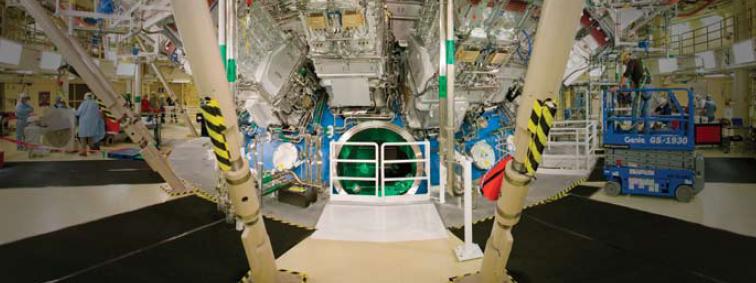
NIF approaching break-even energy
The National Ignition Facility (NIF), based at the Lawrence Livermore Lab, has been working on fusion research using the world’s largest laser. It has been successful in achieving fusion. NIF scientists have been leading a two year nationwide campaign to achieve break even fusion, commonly referred to as ‘ignition’, meaning that more energy is released than put in. An article on Nature.com explains:
This could be the year the National Ignition Facility (NIF) finally lives up to its name. The facility, which boasts the world’s largest laser, is designed to trigger fusion by imploding a target pellet of hydrogen isotopes, thereby releasing more energy than will go into the shot. NIF’s managers think that the end of their two-year campaign for break-even energy, or ‘ignition’, is in sight. “We have all the capability to make it happen in fiscal year 2012,” says Ed Moses, director of the US$3.5-billion facility, at the Lawrence Livermore National Laboratory in California.
This laser based method of achieving fusion, known as ‘inertial confinement’, does not come at a cheap price. ASP believes, however, that it is important to America’s energy security to invest in this research, and we have praised a recent report from the National Academy of Sciences calling for greater research into inertial confinement. Some argue that even if the technology works, it will not be a commercial or economically viable source of energy. This debate also ties into the NIF’s competition with ITER, the International Thermonuclear Test Reactor, which employs magnetic confinement instead of using lasers. What is clear is that:
The NIF scientists aren’t waiting for alternative approaches to catch up, however. Even before achieving ignition, they are racing to plan their next project, a demonstration power plant that they call LIFE, for Laser Inertial Fusion Energy. To be economic, the plant would have to produce more than 50 times more energy from each shot than it puts in, and would have to boost repetition rates from a few shots a day to 15 per second — no mean feat.
While there are physicists who argue that it is too early to tell if the laser approach to fusion will succeed, plans to build LIFE are already being drawn up. Details such as using small LEDs instead of large flashbulbs have already been considered. NIF director Ed Moses has dismissed the notion that it’s too early to commit to lasers. “Because of investment in lasers and transistors for consumer electronics, the world has already chosen, he says.”
Read the full article here.






[…] Dorsk: NIF approaching break-even energy […]
… [Trackback]…
[…] Informations on that Topic: americansecurityproject.org/blog/2012/nif-approaching-break-even-energy/ […]…